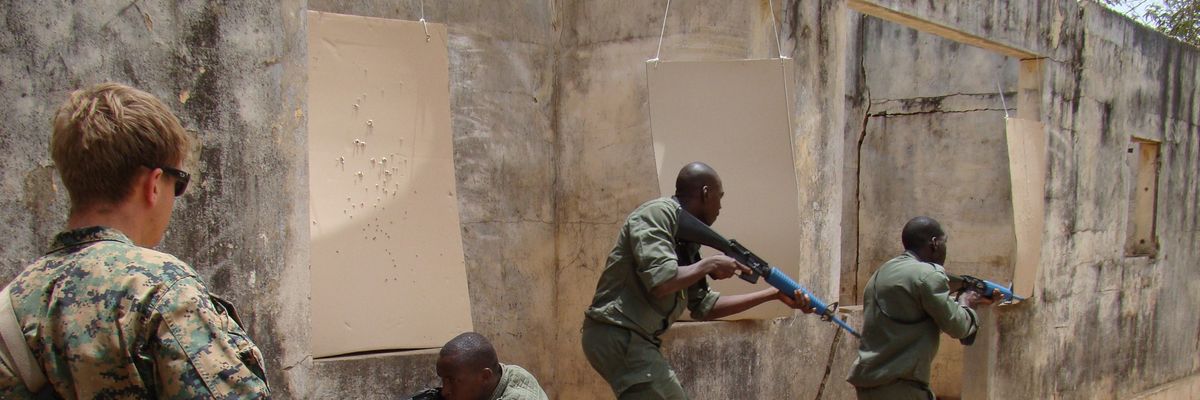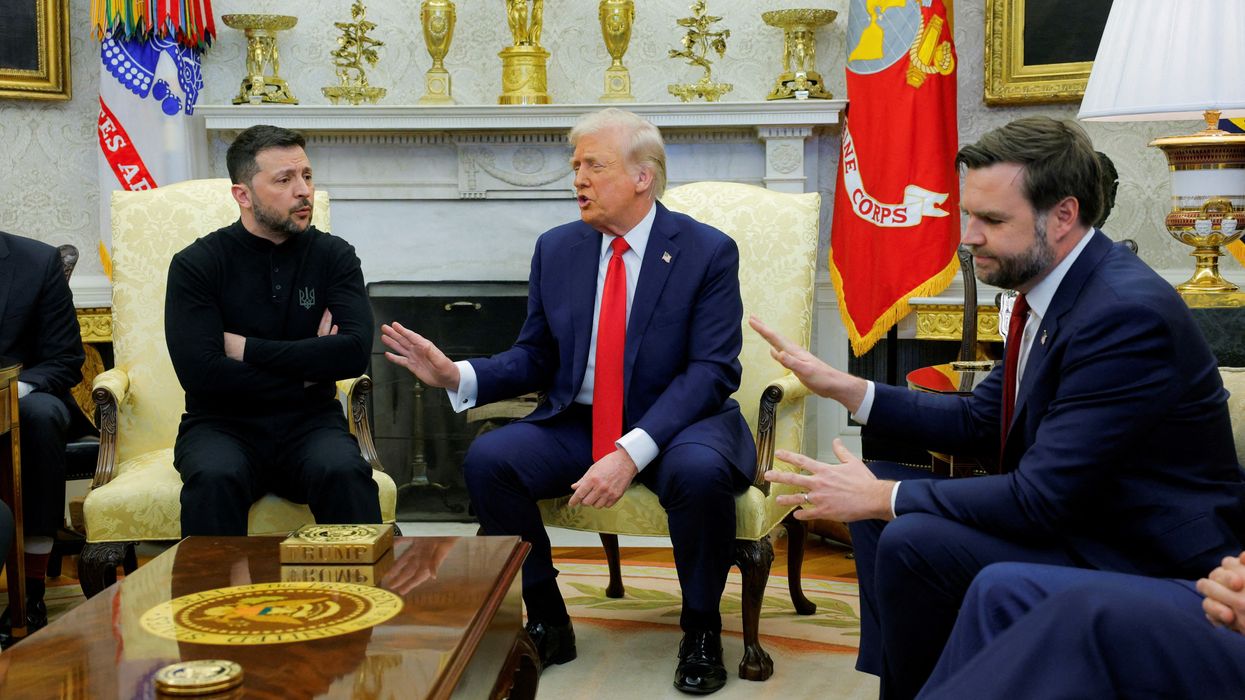On March 24, the “Trans-Sahara Counterterrorism Partnership Program Act” was approved by the Senate Foreign Relations Committee. The bill, introduced for the third time, would give a firmer legal foundation to the Trans-Sahara Counterterrorism Partnership. The TSCTP is an executive branch program co-led by the State Department, the United States Agency for International Development, and the Department of Defense. For the bill’s proponents, making TSCTP more accountable to Congress would enhance its effectiveness in addressing violence in West Africa. A better idea, however, would be to scrap this ineffective program, repurpose the money, and challenge the flawed thinking behind the program itself.
TSCTP was created in 2005 as an expansion of the Pan-Sahel Initiative, which ran from 2002 to 2004. A minor extension of the George W. Bush administration’s “Global War on Terror,” PSI offered security assistance to Mauritania, Mali, Niger, and Chad. TSCTP added Algeria, Burkina Faso, Morocco, Nigeria, Senegal, and Tunisia, and later, Cameroon and Libya. Despite more than 15 years of TSCTP activity, security has degraded in much of the region it covers: 2021 could be the most violent year yet in the tri-border zone of Mali, Niger, and Burkina Faso. Portions of northwestern and northeastern Nigeria also face escalating violence.
TSCTP is one of the U.S. government’s many “train and equip” programs for foreign militaries. As currently articulated, the program has six foci: building counterterrorism capacity; integrating northwest African militaries; improving border security; strengthening the rule of law, albeit with an emphasis on boosting “law enforcement’s ability to detect, disrupt, respond to, investigate, and prosecute terrorist activity;” countering terrorist financing; and “reducing the limited sympathy and support among communities for violent extremism.” Within Africa, TSCTP has a peer program, the Partnership for Regional East Africa Counterterrorism.
Figures regarding TSCTP’s performance are not fully available to the public, in part because much of the program is carried out through defense contractors such as PAE and AECOM. From fiscal year 2005 to fiscal year 2019, some $481 million funded 299 projects. Some of the largest of these projects included support to the G5 Sahel Joint Force, a regional body with a counterterrorism focus; and logistical support for efforts to counter Boko Haram in the Lake Chad Basin. Those two contracts, respectively, have values of $113 million and $64 million. TSCTP programs reach thousands of African soldiers and civilians — the annual Operation Flintlock, a training exercise for TSCTP member countries’ militaries, can draw more than 1,500 participants at a time.
The most basic problem with TSCTP, however, is its wastefulness and poor management. A 2014 report by the Government Accountability Office found that “TSCTP program managers are unable to readily provide data on the status of these funds,” referring to nearly $140 million disbursed between 2009 and 2013. TSCTP’s problems did not improve with time. In September 2020, the State Department’s Office of the Inspector General conducted an audit of TSCTP. The auditors found that the Department’s Bureau of African Affairs was not adequately documenting, monitoring, or assuring the quality of contracts. The OIG flagged $201.6 million as “potential wasteful spending.” The OIG’s report concluded that the State Department’s Bureau of African Affairs “was not ensuring that the assistance provided to the host countries was being used to build counterterrorism capacity.” Two assessments of TSCTP, conducted six years apart, reached similar conclusions — suggesting that the problems are structural and that internal accountability is minimal.
TSCTP’s sloppiness reflects a deeper flaw in its mission. In the Sahel and the Lake Chad Basin, the most conflict-torn zones within TSCTP’s ambit, the core problem is not that national militaries are being outfought by jihadists or rebels in open battles. When West African militaries make shows of force, they can constrain jihadist activity, at least temporarily. The problem, rather, is four-fold: (1) national security forces abuse and alienate civilians, creating spirals of conflict that then leave militaries overstretched and mistrusted by affected communities; (2) local militias attempt to fill the security gap left by soldiers’ limited reach and intermittent presence, perpetrating abuses of their own and triggering inter-communal conflicts that states cannot easily resolve; (3) corruption among civilian and military officials inhibits governance and development in conflict zones; and (4) the overall poverty of the countries themselves means that the resources for enhancing governance and development are limited in the first place.
In light of these profound and interwoven problems, TSCTP’s initiatives and associated activities — such as Operation Flintlock, an annual training where African military officers practice “small-unit tactics exercises to include live-fire ranges, mounted and dismounted movements, reconnaissance, close-quarters battle drills, border patrol operations, post-blast investigations, community key leader engagement, investigative interviews, intelligence sharing, and hostage rescue” — appear superficial and misdirected.
It might be objected that TSCTP programs promote human rights and accountability; a core part of the program is to “provide effective and accountable security and justice services to enhance citizen cooperation with and trust in law enforcement.” Yet in the context of the U.S. government’s reluctance to condemn actual human rights abuses in West Africa, such words fall flat. Human rights abuses in the region are endemic: the mass executions of civilians in western Niger, as documented by the Nigerien National Human Rights Commission, are just one example. It is absurd to think that human rights trainings by U.S. military officers, delivered in between hostage rescue simulations and trips to the firing range, can make a dent in the thinking that repeatedly leads militaries to lash out against civilians – a type of thinking partly driven by outsiders’ pressures on Sahelian governments to produce “results.”
Meanwhile, TSCTP has made little impact on civil-military relations, as evidenced by the 2020 military coup in Mali and a more recent coup in Niger. West African military officers make their own calculations about their and their countries’ interests, regardless of the messages they might have absorbed in interactions with TSCTP. Additionally, TSCTP’s emphasis on improving regional coordination contrasts with the calculations of national governments in northwest Africa; from Algeria to Nigeria, the region’s powers approach cross-border partnerships selectively.
Other training programs in the region have also stumbled, especially the European Union Training Mission in Mali; far from being eager consumers of foreign “expertise,” West African military officers sometimes resent outsiders’ patronizing approaches. As two authors conclude, the European Union’s “ability to perform security [is] hampered by the lack of buy-in from their local partners, as narrating success in a context of escalating violence becomes increasingly implausible.” The same problems affect TSCTP. The counterargument can be made that the situation would be worse without TSCTP, but that argument is hard to accept when the program’s managers cannot show many of their receipts.
Enhanced congressional oversight of TSCTP could help — but likely won’t. At past Congressional hearings where TSCTP has come up, Congresspersons have mostly pitched softball questions, such as “Do you assess that TSCTP countries are better able to effectively combat terrorism and manage border security as a result of their participation in TSCTP?” It is obvious what kinds of answers State or Defense officials will give. And the GAO and OIG reports, harsh though their assessments were, appear to have had little impact.
Rather than solidifying TSCTP, the program should be cut. If governance is indeed at the root of the crises in West Africa, then West African governments need more money to pay for services and staff – a worthy use of U.S. funds. Moreover, scrapping flashy training exercises such as Flintlock could allow the U.S. government more room to deliver constructive criticisms of human rights abuses. Closer and more meaningful relationships with African military officers can be forged by bringing them to the United States to pursue degree programs, rather than through ineffective, “episodic” engagements. In short, TSCTP’s goals could be better achieved through other avenues, and the money could be better spent on addressing the root causes of insecurity in West Africa.
















